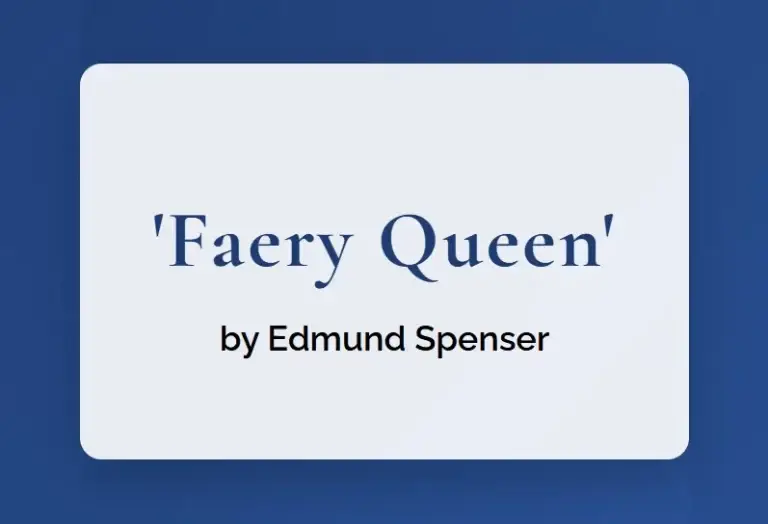The world of literature is rich with epic poems that have stood the test of time, and among them, “The Faery Queen” by Edmund Spenser stands out as a masterpiece of Elizabethan poetry. Written in the late 16th century, this allegorical poem has captivated readers for centuries with its complex characters, intricate plot, and exploration of moral and philosophical themes. In this blog, we will delve into the world of “The Faery Queen,” exploring its history, themes, and significance, as well as providing a detailed Faery Queen analysis.
Background and Historical Context
To understand the significance of “The Faery Queen,” it’s essential to consider the historical context in which it was written. During the Elizabethan era, literature was heavily influenced by classical Greek and Roman works, as well as the prevailing Christian theology. Edmund Spenser, an English poet and scholar, drew upon these influences to create a unique and innovative work that would become a cornerstone of English literature. The poem is dedicated to Queen Elizabeth I, reflecting the admiration and reverence that Spenser had for the monarch, and is considered one of the greatest works of Elizabethan poetry.
Structure and Style
“The Faery Queen” is an epic poem, consisting of six books, each of which explores a different virtue or theme. The poem is written in a style that blends elements of classical epic poetry with the traditions of medieval romance. The use of allegory allows Spenser to explore complex moral and philosophical themes in a way that is both subtle and powerful. Through the use of symbolism, metaphor, and allusion, Spenser creates a rich and layered narrative that rewards close reading and interpretation.
Themes and Characters
At its core, “The Faery Queen” is a poem about the nature of virtue and the human condition. The poem follows the journey of several characters, each of whom embodies a different virtue or quality. The character of Redcrosse Knight, for example, represents holiness, while the character of Britomart represents chastity. Through the interactions and adventures of these characters, Spenser explores themes such as courage, honor, and the struggle between good and evil. A detailed Faery Queen analysis reveals the complexity and depth of these themes, as well as the ways in which they continue to resonate with readers today.
Allegory and Symbolism
One of the key features of “The Faery Queen” is its use of allegory and symbolism. The poem is full of symbols, such as the faery queen herself, who represents the ideal of feminine virtue and beauty. The character of Archimago, on the other hand, represents the dangers of deception and illusion. Through the use of these symbols, Spenser creates a rich and layered narrative that rewards close reading and interpretation. By exploring the allegorical meanings behind the poem’s characters and events, readers can gain a deeper understanding of the poem’s themes and messages.
Faery Queen Analysis
A close reading of “The Faery Queen” reveals a complex and multifaceted work that defies easy interpretation. The poem’s use of allegory and symbolism creates a layered narrative that rewards close attention and analysis. One of the key insights that emerges from a Faery Queen analysis is the way in which the poem explores the tension between good and evil. Through the characters of Redcrosse Knight and Archimago, for example, Spenser depicts the struggle between holiness and deception, highlighting the dangers of evil and the importance of virtue. By examining the ways in which the poem’s characters and themes intersect and interact, readers can gain a deeper understanding of the poem’s moral and philosophical messages.
Conclusion and Call to Action
In conclusion, “The Faery Queen” by Edmund Spenser is a masterpiece of Elizabethan poetry that continues to captivate readers with its complex characters, intricate plot, and exploration of moral and philosophical themes. Through its use of allegory and symbolism, the poem creates a rich and layered narrative that rewards close reading and interpretation.
Whether you are a scholar of literature or simply a lover of poetry, “The Faery Queen” is a work that is sure to inspire and delight. We encourage you to explore this epic poem further, and to discover the many wonders and insights that it has to offer. By delving into the world of “The Faery Queen,” you can gain a deeper understanding of the poem’s themes and messages, as well as the historical and literary context in which it was written.


